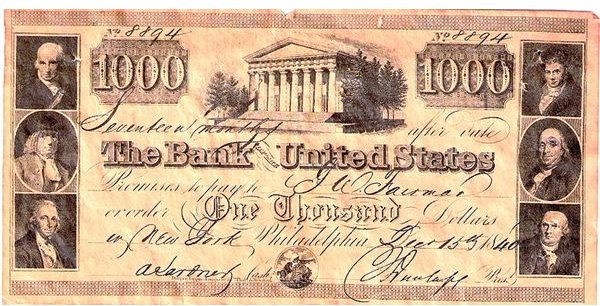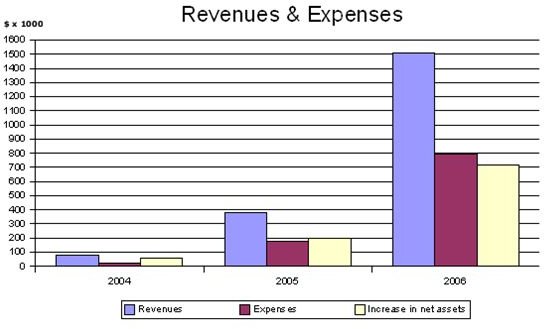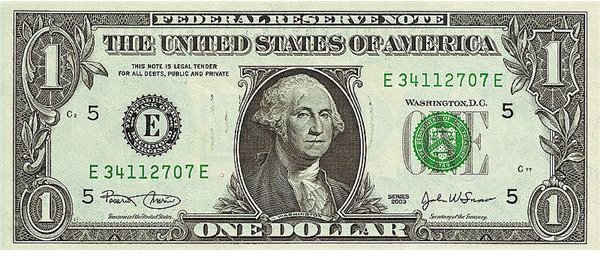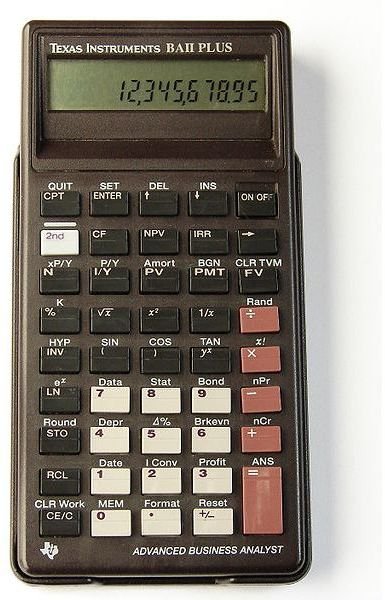Common Accounting Ratios & Formulas Used in Business Analysis
Make Business Metrics More Meaningful
Most successful business owners understand financial statements, beyond their use as summary reports of all accounting transactions that transpired during a particular accounting cycle. They contain data that could be translated as useful guides, in making monetary decisions and business projections. The use of financial accounting ratios can reveal certain industry trends, to determine profitability and cost-efficiency. Rather than rely on flimsy speculations and popular leanings, it would be best if you knew how to analyze business trends to determine, which of them can go from good to bad.
The following sections contain compilations of common formulas for accounting ratios, according to their reasons and functions.
(1) Liquidity Ratios
In examining financial statements, determining a business entity’s liquidity can be first priority. The ability of a company to meet its current and immediate financial demands, is an indication of a smooth and profitable operation. The company may have a substantial amount of cash on hand and in banks, but this is not the only indication of liquidity. Unless the relevance of the cash balance to all other accounts had been evaluated. A brief glance at financial data will not suffice, to ascertain the liquidity of a company or entity. Knowing the company’s sources of funds, is vital before making any investment decisions. Hence, the following financial accounting ratios may be used as tests of a company’s liquidity:
Current Ratio Formula
Current Assets ⁄ Current Liabilities
This measures the proportion of an entity’s current assets against current liabilities. A resulting one-is-to-one ratio would mean that, for every dollar of the total current assets, there is an equivalent one dollar short-term liability. For a current ratio to be favorable, the current asset proportion should be higher than the current liability. To illustrate, Current Assets of $ 50,000 vs. Current Liabilities of $ 50,000 means there is a one-is-to-one ratio (this can be expressed as 1:1) . There is little room for growth in this kind of financial condition, since funds are as good as tied-up to pay-off liabilities that are about to become due. An investor cannot expect dividend appropriations from a company who finds it difficult to improve this kind of ratio. Hence, to be favorable, the current assets should be much higher than the current liabilities.

Quick Asset Ratio Formula
(Cash+ Accounts Receivable+ Short-term Investments) ⁄ Current Liabilities
Unlike in current ratio, the current assets to be considered here are those that can be readily converted into cash with a considerable amount of certainty. Merchandise inventory and prepaid expenses are not included since there is greater uncertainty as to when it can be converted into actual funds. The objective is to determine the ability of the company to settle short–term obligations at any time that its settlement is demanded. Again, a ratio of more than 1:1 would be favorable.
Defensive Interval Ratio Formula
(Cash+ Accounts Receivable+ Short-term Investments) ⁄ Average Daily Expenses
Average Daily Expenses=(Cost of Goods Sold + Total Operating Expenses) ⁄ 365 days
The objective of this ratio is to determine how fast the quick assets can be converted into cash, since the shortness of time is essential to its conversion. The answer to this formula is expressed in terms of days.
Please proceed to the next page for a continuation of the common formulas for accounting ratios.
(2) Profitability Ratios

After determining if the company being evaluated is liquid, the next issue at hand is the profitability of the business entity, in as much as profit is the ultimate goal when investing. Included as among the common formulas for accounting ratios are the formulas used when converting the regular financial reports into common size financial statements. These type of financial reporting measures the trend in income generation, and how such trends have affected the growth of the company’s resources or assets. In addition the following financial accounting formulas are used to determine the profitability of an entity:
Gross Profit Margin Ratio Formula
Gross Profit (Revenues – Cost of Goods Sold) ⁄ Net Income (Gross Profit-Total Operating Expenses)
The resulting ratio will reveal the allowable margins, by which a company profits for every dollar invested in goods manufactured or sold. Hence, total sales of $200,000 divided by a net income of $50,000 will reveal a ratio of 4:1. To interpret this ratio, it means that business was able to meet other operating expenses necessary within a comfortable margin and still realize a fair income. The significance of this ratio becomes evident when compared to previous year’s trends. Any decrease or increase in gross profit, would also mean possible increase in cost of goods sold, increments in mark-ups, price mark-downs or rising overhead costs.
Return on Asset (ROA) Ratio Formula
Net Income ⁄ Average Total Assets
Average Total Assets = Present Total Asset + Previous Year’s Total Asset ⁄ 2years
This ratio indicates the profit realized for every dollar value of asset owned and harnessed.
Return on Equity Ratio Formula
Net Income ⁄ Average Stockholders’ Equity
Average Stockholders’ Equity= Present Stockholders’ Equity + Previous Year’s Stockholders’ Equity ⁄ 2 years
This ratio is indicative of the profit realized for every par value of shares of stock invested in the company.
(3) Activity Ratios

Activity ratios are those used to measure the efficiency by which the company’s management conducts its business operations and harness its resources to optimize the earning potentials of the business. These ratios include but are not limited to the following:
Inventory Turnover Ratio Formula
Cost of Goods Sold ⁄ Average Inventory
Average Inventory = Present Year’s Inventory Balance + Previous Year’s Inventory Balance / 2 years
The result of this ratio will be interpreted as the number of inventory unit sold as against the number of inventory units left unsold. Hence if the company’s cost of goods sold is $100.000 and the average inventory on hand is 20,000, the resulting ratio is 5:1 on the average scale. It means that for every 6 units of goods held for resale, 5 units were sold during the year and an average of 1 unit remains on hand.
Days Inventory on Hand
365 days ⁄ Inventory Turnover
This is an estimation of the number of days that a non-performing inventory is held. A high number would mean inventory management needs improvement, while stock held as inventory should be examined. A high ratio may be indicative that a substantial amount of funds is being tied down by slow moving stocks.
Accounts Receivable Turnover Ratio Formula
Revenue from Sales ⁄ Average Accounts Receivable
Average Accounts Receivable = Present Year’s Accounts Receivable Balance + Previous Year’s Accounts Receivable Balance / 2 years
The resulting ratio will be interpreted as the amount of goods sold in cash versus for every unit sold on credit basis. It is important that the average balance of accounts receivable is minimal to achieve favorable results. To illustrate an unfavorable AR Turnover ratio: Revenue from Sales $200,000, average receivable balance for two years is $ 115,000 and the resulting ratio is 1.74: 1
It reveals that for every dollar of sales made on credit, there is only an equivalent sales of $ 1.74. This means a large part of the sales efforts go into receivables instead of cash.
Days Sales Outstanding
365 days ⁄ AR Turnover
This will provide the number of days it takes the company to collect from the customer.
Accounts Payable Turnover
Purchases on Credit ⁄ Accounts Payable Balance
The resulting ratio will reveal the ratio and proportion of a credit purchase to its remaining balance, to indicate the company’s ability to pay for its stock inventory during a year. To get the days payable, the number of days in a year will be divided by the AP turnover.
Please proceed to the next page for the explanations about Cash Flow Ratios and Solvency Ratios.
(4) Cash Flow Ratios

These ratios will measure the ability of the company to operate its daily operations, pay maturing debts and make major purchases from out of the funds projected from cash flows . This is liquidity based on cash management in as much as major expenses are incurred only if they have been properly projected through the cash flow system.
Cash Flow Solvency Ratio Formula
Actual Cash Flow from Operations ⁄ Total Liabilities
A high cash flow solvency ratio indicates the company’s ability to generate funds from operations to settle due and maturing obligations on time.
Cash Flow Margin Ratio Formula
Actual Cash Flow from Operations ⁄ Revenues from Sales
This ratio indicates the company’s ability to generate funds from its operations, which could be used to meet the day to day operational costs of a going concern.
Cash flow ROA Ratio Formula
Actual Cash Flow from Operations ⁄ Average Total Assets
Average Total Assets = Present Year’s Total Assets + Previous Year’s Total Assets ⁄ 2 years
A company that has high Cash flow ROA ratio has the ability to augment its funds from business operations, which can be used to purchase or pay for capital expenditures.
(5) Solvency Ratios

Solvency ratios are the measure of the company’s resources to pay-off long term debts and are expressed in terms of percentages or ratios. Investors in shares of stock make use of these common formulas for accounting ratios as a final test of the company’s strong showings as a worthy investment. Long –term debts are related to future projections; hence, a test of all its resources to match all other obligations is also necessary. Final decisions are made by making sure that there are minimal risks involved, should the stockholder continue to place his money in the business being evaluated.
Percentage of Debt to Asset Formula
Long Term Liabilities ⁄ Total Assets x 100%
The resulting percentage represents how much of the total assets will be used to pay-off long-term debts in case of dissolution or liquidation.
Debt to Equity Ratio Formula
Total Liabilities ⁄ Total Equity
The resulting ratio indicates the proportion of all existing liabilities to equity or business ownership. Since the fundamental accounting equation is Asset = Liabilities + Capital, the ratio will indicate the proportion of the company’s asset composition.
There are more accounting ratios used in analyzing the financial data of an organization, entity or institution but the compilations presented in this article, represent the most common formulas for accounting ratios you can utilize. They are useful as simple tools for analysis, to measure the liquidity and performance of a business.
Reference Materials and Images Credit Section
Reference Materials:
- https://financial-education.com/2007/01/30/solvency-ratios/
- https://financial-education.com/2007/01/30/profitability-ratios/
- https://financial-education.com/2007/01/30/the-defensive-interval/
- https://financial-education.com/2007/01/31/the-current-ratio/
- https://www.va-interactive.com/inbusiness/editorial/finance/ibt/ratio_analysis.html#3
- https://financial-education.com/2007/01/31/liquidity-ratios/
Images:
- Wikimedia Commons
